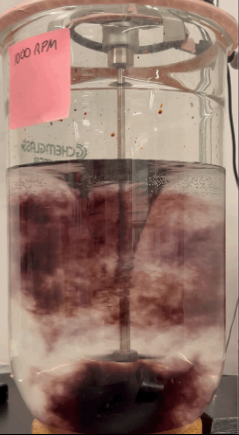2023 AIChE Annual Meeting
(301a) Experimental Study of Blending in Unbaffled and Baffled Tanks
Authors
In this presentation we will examine the effect of baffles on the blend time using one vessel; with and without baffles. The blend time was measured using the iodine color change method using a range of viscosities and Reynolds Numbers. The depth of the vortex was also measured. The same axial flow down pumping impeller is used. We identified two blend times in using unbaffled tanks, a short blend time for the outer zone and a much longer time for the inner vortex centered zone which defines the overall blend time for the vessel.
In this work we observed that the flow patterns are dramatically different. At high Reynolds Numbers with the baffled configuration we see the familiar turbulent diffusion throughout the vessel. Without the baffles the fluid segregates into two zones: a swirling inner zone near the shaft and a more turbulent outer zone. Videos of the color change experiments will be shown in the presentation.
The overall blend time at low Reynolds numbers is longer in the baffled tank at the same rotational speed compared to un-baffled tank and the difference decreases with Reynolds Number. At these low Reynolds Number the baffled blending is in the transitional flow regime between turbulent and laminar with a combination of eddies and striations. The last region of the tank to become completely mixed is located behind the baffles. At high Reynold's numbers the unbaffled blend times are longer than the baffled tank. The baffled tank blend times remain constant with Reynold's number, but the unbaffled blend times increase with Reynold's number. In this presentation we also report data for vortex depth as a function of Reynold's number.
